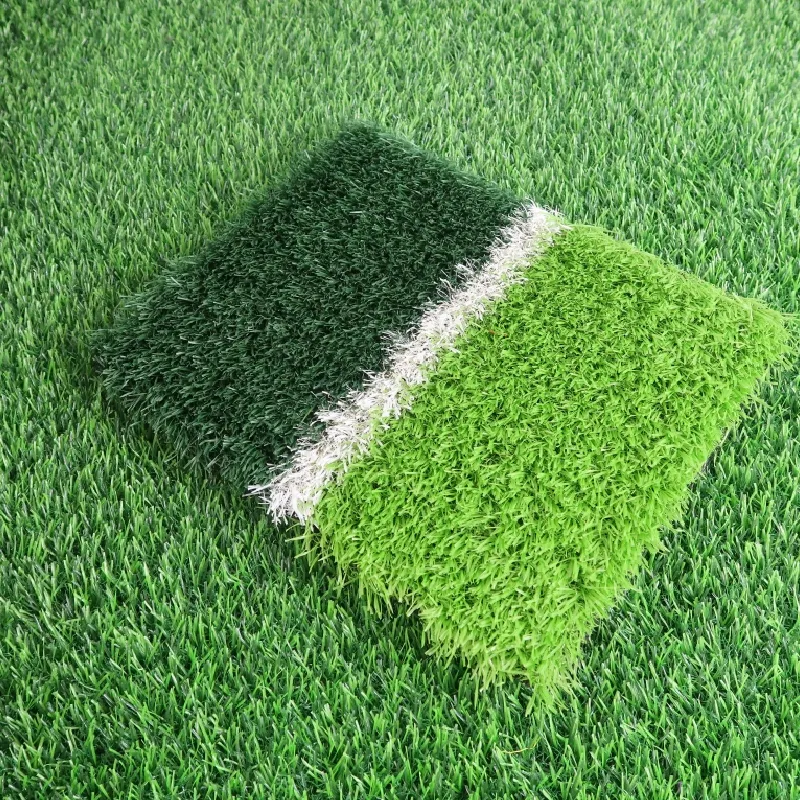
- Afrikaans
- Arabic
- Belarusian
- Bengali
- Czech
- Danish
- Dutch
- English
- Esperanto
- Estonian
- Finnish
- French
- German
- Greek
- Hindi
- Hungarian
- Icelandic
- Indonesian
- irish
- Italian
- Japanese
- kazakh
- Rwandese
- Korean
- Kyrgyz
- Lao
- Latin
- Latvian
- Malay
- Mongolian
- Myanmar
- Norwegian
- Persian
- Polish
- Portuguese
- Romanian
- Russian
- Serbian
- Spanish
- Swedish
- Tagalog
- Tajik
- Thai
- Turkish
- Turkmen
- Ukrainian
- Urdu
- Uighur
- Uzbek
- Vietnamese
Artificial Turf Solutions for Golf Greens Enhance Your Game with Synthetic Surfaces
Dec . 11, 2024 10:48 Back to list
The Rise of Synthetic Turf in Golf Greens
In the world of golf, maintaining pristine greens is critical for both the aesthetic appeal and functionality of the course. Traditionally, natural grass has been the standard for golf greens, but in recent years, synthetic turf has emerged as a popular alternative. This shift toward synthetic materials offers numerous benefits that make it an attractive option for golf course owners and players alike.
What is Synthetic Turf?
Synthetic turf, often referred to as artificial grass, is a man-made surface designed to imitate the appearance and characteristics of natural grass. It is typically made from polyethylene, polypropylene, or nylon, providing a durable and consistent playing surface. The technology behind synthetic turf has advanced significantly, resulting in products that closely emulate the look and feel of real grass while eliminating many of the drawbacks associated with natural greens.
Benefits of Synthetic Turf on Golf Greens
1. Consistency and Playability One of the most significant advantages of synthetic turf for golf greens is its ability to provide a consistent playing surface. Natural grass can be affected by weather conditions, maintenance inconsistencies, or pest infestations, leading to unpredictable playing experiences. Synthetic turf, on the other hand, remains uniformly smooth and even, allowing for a more reliable putting surface. This consistency enhances the overall playing experience and can lead to improved performance from golfers.
2. Reduced Maintenance Traditional golf greens require a considerable amount of maintenance, including mowing, watering, aeration, and pest control. These tasks can be labor-intensive and costly. Synthetic turf drastically reduces the need for such upkeep. It does not require mowing or watering, and it is resistant to pests and diseases. This cutback on maintenance not only saves money but also frees up staff to focus on other areas of the course.
golf green synthetic turf

3. Environmental Benefits The environmental impact of maintaining natural grass can be significant, particularly in regions prone to drought. Golf courses often rely on extensive irrigation systems to keep greens healthy and playable, leading to high water consumption. Synthetic turf eliminates the need for irrigation, making it a more sustainable option in areas where water conservation is crucial. Furthermore, the reduction in chemical treatments for pests and fertilizers can lead to a healthier local ecosystem.
4. Durability and Longevity Synthetic turf is designed to withstand the rigors of constant play without showing signs of wear and tear. High-quality synthetic materials can last for many years, often up to 15-20 years with minimal degradation. This durability ensures that golf courses can maintain a high standard of play without the need for frequent replacements or repairs.
5. Aesthetic Appeal While functionality is paramount, the visual aspect of golf greens is equally important. Modern synthetic turfs come in various shades and textures, allowing course designers to choose options that complement the natural landscape. These visually appealing surfaces can enhance the overall appearance of the course, attracting more players and visitors.
Challenges and Considerations
Despite the many advantages of synthetic turf, there are also challenges to consider. The initial installation cost can be higher than that of natural grass, which may deter some course owners. Additionally, some purists argue that the feel of synthetic greens is not quite the same as that of natural grass, leading to a debate over authenticity in the golfing experience.
Conclusion
The trend toward synthetic turf in golf greens is indicative of a broader movement within the sports industry to embrace innovation and sustainability. As technology continues to advance, synthetic surfaces are likely to become even more lifelike and functional. While the debate over natural versus synthetic grass may continue, the numerous benefits of synthetic turf are undeniable. With their reduced maintenance needs, environmental advantages, and ability to provide a consistent playing experience, synthetic greens are set to play a significant role in the future of the sport. Golf courses that invest in synthetic turf are not only enhancing their playability but also paving the way for more sustainable practices in the golfing world.
-
The Benefits of Artificial Turf for Indoors
NewsJul.15,2025
-
How Artificial Grass Suppliers Ensure Quality Products
NewsJul.15,2025
-
Artificial Grass and Pets: A Space for Relaxation
NewsJul.08,2025
-
Balcony & Outdoor Decoration with Artificial Grass
NewsJul.08,2025
-
Best Indoor Artificial Grass for Home
NewsJul.07,2025
-
Best Pet Turf for Dogs: Safe & Durable Artificial Grass Options
NewsJul.07,2025
Products categories









